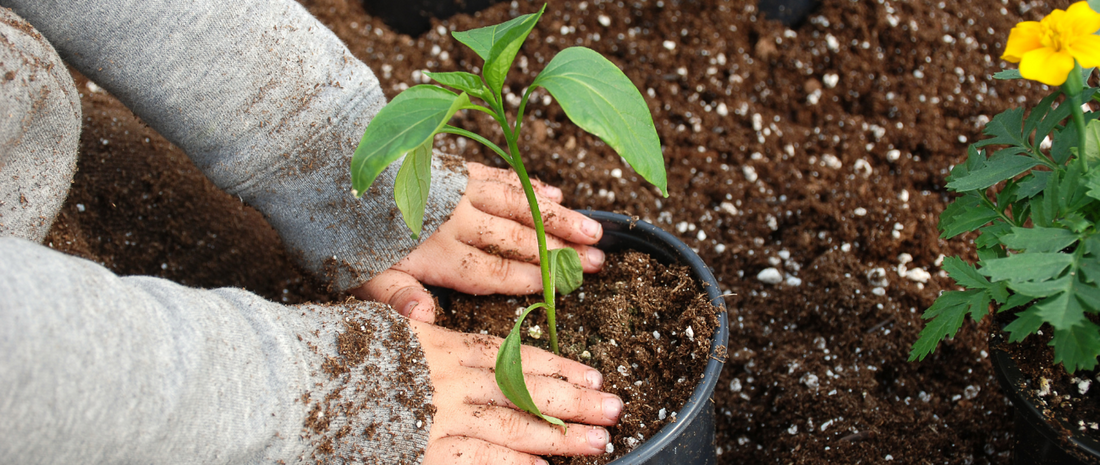You'll have some great compost after adding all of your garden and food waste into the HOTBIN.
First: Check if your compost is ready to use!
If you are unsure, check how does HOTBIN compost look and feel or what you might expect from your first batch for guidance.
Ready? Let's look at some ways to use it!
10 Places to Use Your Homemade Compost:
Just dig it in: The important ingredient in compost is humus – this holds and releases both nutrients and water. The plants interact with the humus via the root zone so it is logical that humus needs digging in. Yes, rain will leach nutrients down from compost and earthworms will eat compost on the surface and expel it underground. But these take time – so for us ‘digging in is best’
-
Flower Beds: It is hard to add too much compost – but remember we are talking here about mature compost. (Immature compost and/or fresh manure is a different beast – see mulching below). To make a basket (planter tub mix), sieve compost, blend with soil and sand and add colloidal humus.
-
Vegetable Beds: It is hard to overdose on compost, so be generous. Most of you will be well versed in crop rotation and aware that not all crops like a rich soil, potatoes will but peas won't for example.
-
Tomato or Cucumber Beds: Make a tomato or cucumber bed in your greenhouse. They love deep beds with lots of compost. Be aware that HOTBIN compost holds loads of water and does not dry like peat, some will argue ‘nothing beats peat’ but humus beats peat, the trouble is not all composts contain a lot of humus! Read more about the ability for humus and compost to retain water.
Top Dressing
-
Indoor Plants: Add 1cm around the top or remove from the plant pot and add 1cm in the base.
-
Outdoor Flower Beds: This uses less labour (no digging) but note that humus is most beneficial at the root zone.
-
Lawns: Normally using compost to top dress the lawn is an autumn activity - however, sieved compost is a great way to kick start the season – it will help reduce fertiliser needs, control moss and reduce the need for watering.
Seedlings – this is a bit more complex!
-
Seedlings: You will find many gardeners bemoaning the results of using various commercial composts to grow seedlings (rotting stems, deformed growth and no germination). Compost alone is not a good seed-potting medium, seeds & seedlings grow best in compost mixed with sand and soil to provide good drainage and nutrient release at a steady rate.
To make a good seed germination mix, sieve the compost and blend with soil and sand.
Pots and Containers
-
Containers: Compost’s ability to absorb and retain water is especially useful in containers that dry out quickly. No single recipe is recognized as best for all, but a general mix is 2 parts compost | 1 part vermiculite | 1 part coarse sand | 1 part coconut coir. We suggest you use sieved compost for container use.
Around Trees
-
Trees: Spreading compost around the roots of your trees can provide them with important nutrients and can help protect against disease. Be careful not to spread to close to the trunk though.
Soil Improvement
-
Improve Clay Soils: dig in compost "as it comes" from your bin or heap
Improve Sandy Soils: sieve compost adding only the fine parts
Bonus Way to Use HOTBIN Compost: A Note on Liquid Fertiliser
Liquid Fertiliser can be drained and collected during the HOTBIN composting process and used as a liquid feed for your garden. Excess water in the HOTBIN will drain towards the bottom of the bin dissolving humic compounds from the compost to form a dark brown liquid.

